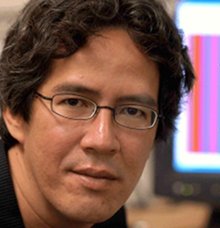SUMMARY
This is AI generated summarization, which may have errors. For context, always refer to the full article.
 It has been a few days since the 60-30-10 pattern was first described by an Ateneo professor. First social media, then major media outlets, and then the Comelec and politicians weighed in. There are calls for Comelec to investigate, for Congress to look into what was described as a suspicious pattern. It was, to many, a sign that the last elections had a pre-programmed result that was impossible to explain except by high-tech cheating.
It has been a few days since the 60-30-10 pattern was first described by an Ateneo professor. First social media, then major media outlets, and then the Comelec and politicians weighed in. There are calls for Comelec to investigate, for Congress to look into what was described as a suspicious pattern. It was, to many, a sign that the last elections had a pre-programmed result that was impossible to explain except by high-tech cheating.
Luckily for all of us, other netizens in social media (many of whom are scientists or statisticians), and reports in some websites have pointed out what is really happening.
No conspiracy here — just mathematics at work.
Indeed, the pattern is easily explained (depending on what data you were looking at) by what we call the law of large numbers. As canvass upon canvass reported larger and larger voter results (in the millions!), then the percentages of votes for Team PNoy should not change very much with each new canvass.
And indeed, this is borne out in Rappler’s story. When you look more closely at data from region to region, you don’t see the pattern. Each region reports Team PNoy as winning, but with a respectable spread of the numbers as each region has them as stronger or weaker. There is a difference of nearly 6% for Team PNoy between the region where it performed well (Region 5) and the region where it did poorly (Region 2). And in politics as well as in statistics, 6% is a large difference!
In fact, the 60-30-10 event is telling us two things, none of which has anything to do with electoral cheating.
First, it is telling us something interesting about Philippine politics.
If you look at the numbers closely, you see that who people voted for changed across the country as locals preferred certain candidates. So Grace Poe did well almost everywhere, but in Ilocos it was Loren Legarda, and Nancy Binay was at the top in Cagayan Valley.
But nationally everyone seems to have voted for the same voting bloc. Team PNoy consistently got between 56.5% to 63% of the votes across the country, no matter what region you looked at. So while people had specific preferences in local areas for whether they preferred Poe or Escudero or Legarda or Binay, they still stuck to voting for broad political blocs — either Team PNoy or the United Nationalist Alliance (UNA).
We are seeing these voting blocs emerge as national blocs, which do well no matter what province or region the voters are from. In fact, if they can only deliver a consistent ideology, we may be tempted to call them national parties – at least in the sense that they command a national following.
The second thing this tells us, however, is how lacking many of us are in what we call numeracy — the mathematical equivalent of literacy. It was a little scary how quickly the 60-30-10 pattern was picked up in the media, with one national daily placing it as a headline!
Dealing with big data
Now maybe we don’t all have mathematics training, but a very basic notion in statistics is that large sample sizes (like large numbers of votes in a canvass) reflect an average very well. So this pattern would not have been a surprise, and many of us who had knowledge of statistics immediately figured out what was going on.
But even if you don’t have training in math, when it comes to numbers, journalists should have known to call some of the excellent statisticians in the country and ask them if this supposed pattern was unusual. No one seems to have done that, instead relying on “IT professionals” who may know a lot about computer programming but not really about probability theory.
Good journalists would have known the difference and should know whom to call.
We are now in an era of what we call Big Data — where we are inundated by large amounts of information in the form (many times) of numbers.
As a society, we need to be smarter about how we look at these numbers and what we can learn from them — not find ghost patterns, but real patterns that tell us something about our society and our country.
The results of the last election is a large amount of data. And I am sure there are more than a few smart Filipino statisticians who can dig deep and find the interesting stories it is telling us about the shape of electoral politics in the Philippines. – Rappler.com
The author is Dean of Science, New York University
Related stories:
- 60-30-10? Regional votes don’t support it
- Enrile, Zubiri win in precincts with 100% turnout
- 11 senatorial bets not no. 1 in bailiwicks
- Visualization: official results for the senatorial race
- Visualization: unofficial results for the senatorial race
- Breakdown of votes for the senatorial race by canvass reports/ region / provinces and cities
Add a comment
How does this make you feel?
There are no comments yet. Add your comment to start the conversation.